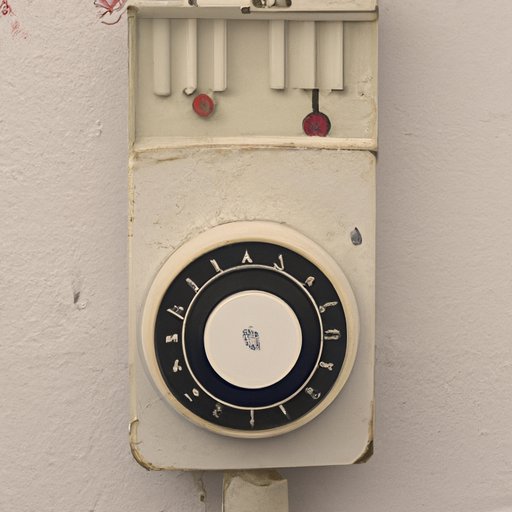Introduction
A thermostat is a device used to regulate the temperature in a home or building. It works by sensing the ambient temperature and turning on the heating or cooling system when the desired temperature is not being met. Thermostats can be manual, programmable, or smart, and are essential for keeping your home comfortable and energy efficient.
A Guide to Understanding Thermostat Basics
Thermostats are used to control the temperature in a home or other type of building. They sense the temperature in the environment and turn on the heating or cooling system when needed. The thermostat then turns off the system when the desired temperature is reached, thus maintaining a comfortable and consistent indoor climate.
How Thermostats Regulate Temperature
Thermostats use a sensor to measure the temperature in the area where it’s installed. This sensor is typically located on the wall near the thermostat, but may also be built into the unit itself. The thermostat then compares the current temperature with the set temperature, which is usually adjustable by the user. If the current temperature is lower than the set temperature, the thermostat will turn on the heating system; if it’s higher, it will turn on the cooling system.
Exploring the Components of a Thermostat
The main components of a thermostat include: a display screen, a temperature dial, a fan switch, and a heat/cool switch. The display screen shows the current temperature as well as the set temperature. The temperature dial allows you to adjust the set temperature. The fan switch controls the blower motor of the HVAC system, while the heat/cool switch tells the thermostat whether to turn on the heating or cooling system.

How Different Types of Thermostats Work
Manual and programmable thermostats are the two most common types. Manual thermostats require the user to manually adjust the temperature settings, while programmable thermostats allow users to create multiple temperature settings that can be programmed to run at certain times throughout the day.
Smart thermostats, on the other hand, are connected to the internet and can be controlled remotely via a smartphone or tablet app. Smart thermostats allow users to adjust the temperature from wherever they are, as well as track energy usage and receive notifications when something isn’t working correctly.

Benefits of Installing a Programmable Thermostat
Installing a programmable thermostat offers many benefits, including cost savings and increased comfort. Studies have shown that installing a programmable thermostat can reduce energy consumption by up to 10%, resulting in significant cost savings over time. Additionally, programmable thermostats allow users to customize their temperatures for different times of the day, ensuring maximum comfort all day long.
Troubleshooting Common Thermostat Problems
If your thermostat isn’t working properly, there are a few things you can do to try and fix the issue. First, check the wiring to make sure all connections are secure. If the wiring looks okay, it’s possible that the batteries need to be replaced. If neither of these solutions resolves the issue, it’s best to contact a professional HVAC technician.
Tips for Maintaining Your Thermostat
To ensure your thermostat continues to work properly, it’s important to keep it clean and calibrated. Regularly dusting the thermostat can help keep it running smoothly. Additionally, it’s important to replace the batteries in your thermostat every few years to avoid any issues with power or accuracy.

The Future of Thermostat Technologies
As technology continues to evolve, so too does the world of thermostats. Innovations such as voice-activated thermostats and geofencing capabilities are making it easier than ever to maintain a comfortable indoor temperature. Additionally, the development of machine learning algorithms is allowing thermostats to become increasingly accurate and efficient.
Conclusion
Thermostats play an important role in regulating the temperature in homes and other buildings. They come in three main varieties—manual, programmable, and smart—and offer many benefits, including cost savings and increased comfort. To ensure your thermostat works properly, it’s important to keep it clean and calibrated, as well as replace the batteries every few years. As technology continues to advance, we can expect to see even more innovations in thermostat design in the years to come.
(Note: Is this article not meeting your expectations? Do you have knowledge or insights to share? Unlock new opportunities and expand your reach by joining our authors team. Click Registration to join us and share your expertise with our readers.)
